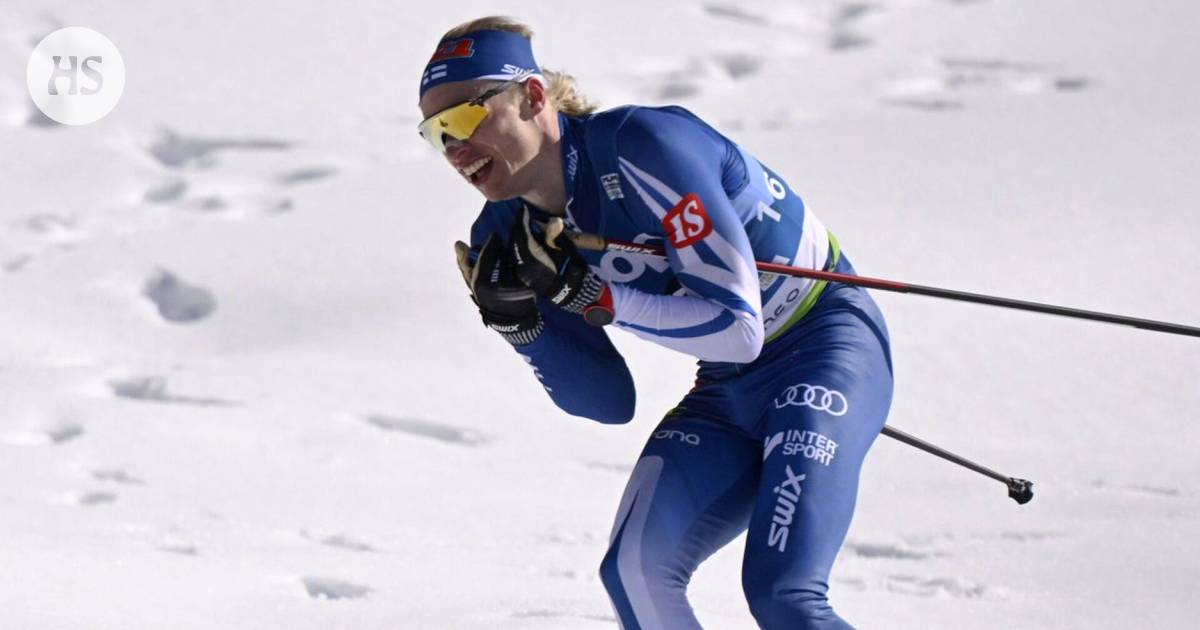According to a Finnish ski trail surveyor, the current measurement method allows kilometers to be thrown compared to the declared length.
in Espoo resident Janne Pylväs has been involved in the homologation group of the International Ski Federation since the beginning of the 2000s. The group includes half a dozen people, whose task is to ensure that the cross-country skiing routes are of sufficient quality for international competitions.
Homologation inspectors rarely end up in the public eye, but this happened on Sunday. Sanoma reported that the men’s 50 km route at the World Championships in Planica was severely undersized. Or at least the distance that the competitors skied.
According to Fis data, the finish line was reached after skiing 49.7 kilometers, but based on the information shared by the skiers, the distance was about 45 kilometers.
Are the skiers’ information about the distance of about 45 kilometers believable?
“They are,” Pylväs says.
The reason is the measurement method and shorter laps than in previous years.
“Because the loops that can be twisted have become shorter, the phenomenon is repeated,” Pylväs says.
“Geps (GPS measurement) in smartphones are quite accurate when measuring length. There can be variations in measuring the height due to variations in the atmosphere and air pressure, but the length is accurate enough,” Pylväs says.
However, the measurement of routes is done with an even more accurate method, i.e. bowling data using a laser pointer.
To the pole according to the 7.14 kilometer run, the actual skiing distance may well be 750 meters shorter than in the optimal measurement.
After seven rounds of the 7.14 kilometer loop, the total distance could be around 45 kilometers, as some skiers’ smart devices showed.
How can the difference between the declared distance (50 km or 49.7 km) and the actual distance (about 45 km) be so big?
“In the homologation instructions, the route is advised to be measured along the center line, and not the ideal line that the skier takes,” Pylväs says.
Janne Pylväs has been part of Fisi’s homologation group since the beginning of the 2000s.
Since the route in Planica had a lot of bends, the throw between the measured route and the actual ski line grew large. Or actually shrunk.
“It doesn’t have to be a very long run when the difference starts to accumulate quite a lot.”
Pillar was present at the ski stadium in Kranjska Gora four years ago, when the tracks for the World Championships were being planned.
“The course must be wide enough on the climbs to accommodate three free skiers side by side.”
The width is then 9 meters, so we are talking about a highway-like lane.
“There has to be enough width that a skier in good shape has a path to take off,” Pylväs explains the principles of piste design.
The best in terms of condition must stand out. The maximum width of the fairway is 12 meters. It is needed in a combined race, when both types of skiing are skied on the same route.
“In the calculation, 6 meters is enough, but when you go to the extreme edge, the difference in the course of the measured route becomes 3 meters.”
The final measure of the “corrected” distance is determined by the skier’s turning radius in the turn. Endurance sports fans remember how Lasse Virén avoided running extra meters by staying close to the edge of the track all the time. Smart skiers do the same, but for measuring technical reasons they collect “submeters”.
About the problem has been discussed for a couple of years. Two years ago, at the World Championships in Oberstdorf, the issue was brought up Petter Kukkonenwho even protested the measurement of the combined ski route.
The distance was supposed to be 10 kilometers, but based on the Finnish team’s measurements, the skiers progressed only 9.2 kilometers. The Finns’ protest was pointless, because measured according to the center line, the route was 10 kilometers.
Pylväs understood Kukkonen’s irritation. In his opinion, the current instruction is outdated.
“The old instructions should be updated now at the latest and hopefully there will be a change soon.”
Pylväs thinks Planica’s uproar is the last straw for the need for change. A five-kilometer throw is too big for skiers to swallow.
Pylväs has been involved in Fisi’s duties for more than 20 years, and he knows Planica’s competition director well Uroš Ponikvarin. The Slovenian is also the chairman of the FIS cross-country skiing committee and an experienced cross-country skier.
He is the person in charge of the organizers, but the inspector of the routes comes from another country. In Planica, the task was entrusted to a Swiss To Markus Kohler.
Just now Pylväs is outlining the routes of the 2026 Olympic tracks together with the race organizers. The cross-country skiing center of the Milan Olympic Games is in Val di Fiemme. Pylväs hopes that Fisi’s homologation group will modify the guidelines before the plans for the Olympic tracks are locked.
“Our proposal will be transferred to the rules group for approval. This is such a small change that the matter will hardly be considered by the cross-country committee”, Pylväs thinks.
According to Suomalainen, the matter has already been discussed among the members of the group, and he does not believe that his colleagues will oppose the proposal to change the measurement method.
Because Pylväs is responsible for the winter 2026 Olympic tracks, he promises that there the “ideal distance of the track master” will be approximately the same as the actual distance of the skiers.
“There, the lengths have to be the right size,” Pylväs says.
“The length of the king’s journey does not have to be exactly 50.0 km, but according to the rules, it can be a little less or more,” he elaborates.
According to the pole, in Val di Fiemme, the 2026 royal journey will be completed with 5 and 8.3 kilometer runs.
#skiing #expert #hopes #uproar #World #Ski #Championships #correct #guidelines #change









